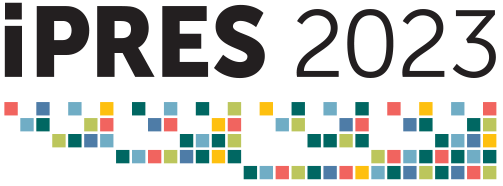Title: Long-Term Preservation of a Software Execution State
Author(s): Rafael Gieschke, Klaus Rechert and Euan Cochrane
Abstract: Software is a very complex product, offering an endless number of different states and appearances. To foster academic discussion about software-based cultural and scientific phenomena like computer games, digital art or scientific computational models it is necessary to reference specific moments of running software. In this article we discuss the possibilities to “freeze” software while being executed and describe constraints for the long-term preservation of these snapshots.
Type: Long Paper
————————————-
Title: Find the Missing Piece: Adding Digital Preservation to the NFT Trading Ecosystem
Author(s): Pengyin Shan
Abstract: The NFT (Non-fungible token) market is experiencing explosive growth. While artists, collectors, and crypto enthusiasts are jumping into this ecosystem, traditional collectors found it more challenging to evaluate asset value in this NFT market than in the established collectible market. This paper navigates the reason for this problem by examining the design of NFT using ERC-721 and ERC-1155 standards, then illustrates that NFT’s infrastructure makes its evaluation more based on its metadata collection, which creates inconsistent trading value. This paper will propose a revised workflow to add digital preservation to the NFT trading ecosystem. The paper suggests adding digital preservation clients to the Ethereum blockchain and building communication with the back-end digital preservation system to guarantee the stability of NFT’s digital assets. In the end, this paper will discuss the benefit of the new workflow and potential future challenges to the revised NFT market.
Type: Short Paper
————————————-
Title: Evolution of Born-Digital Moving Image Processing : Moving to scalable and sustainable workflows
Author(s): Rachel Curtis and Laura Davis
Abstract: Long-term preservation of born-digital moving image content is similar to that of any other file-based content in many ways. However, large file sizes, specialized equipment and resources, significant processing storage needs, and the movement of large files are challenges to creating sustainable and scalable workflows. The Moving Image Section at the National Audio Visual Conservation Center at the Library of Congress is making great strides in the development of sustainable and scalable workflows through an understanding of the technical infrastructure, moving image file characteristics and requirements, and the adoption of automated workflows using a combination of open source software and hardware resources.
Type: Short Paper
————————————-
Title: EaaSI preservation of Mobile Applications
Author(s): Euan Cochrane, Jurek Oberhauser and Rafael Gieschke
Abstract: Mobile devices have revolutionized computing and democratized access to it. The applications we use on our mobile devices play a critical role in shaping our online experiences, our culture, our politics, and our access to information. Mobile applications are also widely used for data gathering and asset management in many domains from scientific research to infrastructure maintenance. With such a wide-reaching impact it is critical that the preservation community is able to maintain access to mobile applications for future generations. In this short paper we outline progress in using the Emulation as a Service Infrastructure (EaaSI) platform to run obsolete versions of the Android operating system in virtualization and emulation in order to maintain access to mobile applications. We also detail the current limitations of virtualizing and emulating mobile devices and provide a list of future challenges to address as we move forwards with ensuring long-term access to this essential part of our history
Type: Short Paper
Event Timeslots (1)
Thursday, September 21
-
IM-2
